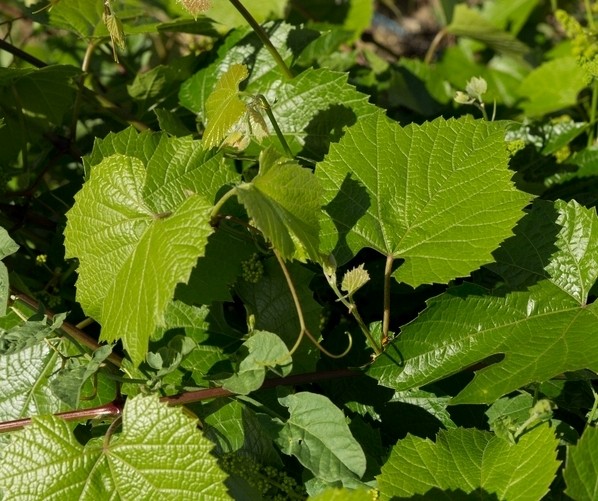Spanish grape
(Vitis cinerea helleri)

Description
Vitis berlandieri is a species of grape native to the southern North America, primarily Texas, New Mexico and Arkansas. It is primarily known for good tolerance against soils with a high content of lime, which can cause chlorosis in many vines of American origin. Lime is a characteristic of the soils of many classical French wine regions and highly regarded vineyard sites, and many Vitis vinifera cultivars were well suited to these growing conditions. When American vines were imported to Europe as rootstocks for grafting V. vinifera on, in the wake of the Great French wine blight, it initially proved difficult to find vine species that would grow well in lime-rich soil. V. berlandieri, which had adapted to limestone hills in central Texas, provided the lime tolerance needed to solve this problem. However, V. berlandieri itself is poorly adapted to grafting. Therefore, various rootstocks resistant against both phylloxera and lime, and suitable for viticulture, were produced by crossing V. berlandieri and Vitis riparia, Vitis rupestris or V. vinifera. Vitis berlandieri is also known as Fall Grape. In some classifications it is considered to be a subspecies of Vitis cinerea. Vitis (grapevines) is a genus of 79 accepted species of vining plants in the flowering plant family Vitaceae. The genus is made up of species predominantly from the Northern Hemisphere. It is economically important as the source of grapes, both for direct consumption of the fruit and for fermentation to produce wine. The study and cultivation of grapevines is called viticulture. Most cultivated Vitis varieties are wind-pollinated with hermaphroditic flowers containing both male and female reproductive structures, while wild species are dieceous. These flowers are grouped in bunches called inflorescences. In many species, such as Vitis vinifera, each successfully pollinated flower becomes a grape berry with the inflorescence turning into a cluster of grapes. While the flowers of the grapevines are usually very small, the berries are often large and brightly colored with sweet flavors that attract birds and other animals to disperse the seeds contained within the berries. Grapevines usually only produce fruit on shoots that came from buds that were developed during the previous growing season.
Taxonomic tree:







